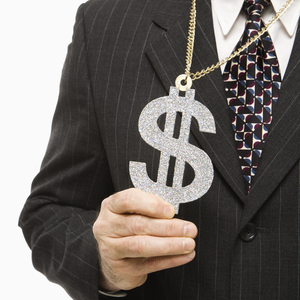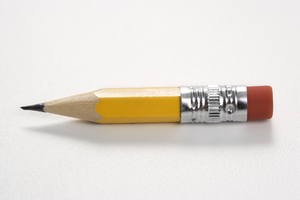YOUR COMPANY IS LOOKING FOR BUSINESS ASSET FINANCE!
EQUIPMENT LEASING SOLUTIONS IN CANADA
You've arrived at the right address! Welcome to 7 Park Avenue Financial
Financing & Cash flow are the biggest issues facing business today
ARE YOU UNAWARE OR DISSATISFIED WITH YOUR CURRENT BUSINESS FINANCING OPTIONS?
CALL NOW - DIRECT LINE - 416 319 5769 - Let's talk or arrange a meeting to discuss your needs
EMAIL - sprokop@7parkavenuefinancial.com
7 Park Avenue Financial
South Sheridan Executive Centre
2910 South Sheridan Way
Oakville, Ontario
L6J 7J8

Equipment financing in Canada (although my Canadian business owners and financial managers might not realize it) requires some assembly. But don't worry, it doesn't bring the same challenges as an IKEA put together; it simply understands that some knowledge of the basics becomes critical to not wasting your capital when it comes to leasing asset finance and addressing the purchase price of the asset. Let's dig in.
ACQUIRING ASSETS THROUGH LEASE FINANCING
Lease finance is all about asset acquisition - acquiring assets at the right time to run and grow your company. Your ability to understand what type of lease you need and focus early on on the agreement's basics can sometimes cost you the thousands of dollars you thought you were saving with this popular tool in Canadian business financing.
WHAT ARE THE COSTS INVOLVED IN EQUIPMENT LEASING
The current Canadian scene in asset financing via leases or rentals comes with terms and charges that need to be assessed upfront. In the last several years, the accounting world has revisited OPERATING LEASES and made some real changes to how this oft-under-looked finance vehicle works.
THERE ARE 2 TYPES OF LEASES IN CANADA
We are, of course, assuming that you as the business owner/manager understand that you do, in fact, have two choices - either a capital lease, which is a lease to own or finance lease, or an ' operating lease' which, stated, is a rental of sorts. The type of lease you choose, as well as the term of the lease, will dramatically affect your monthly payments. In capital leases, you have decided to purchase the equipment and own it at the end of the lease. Therefore the emphasis is on the life of the asset during and after the lease term.
We can't overemphasize the importance of determining the asset's value and the useful life of the asset if you choose to have the asset transferred to the lessee - i.e. your firm.
At the end of the day, it's all about your choice to use an asset or own an asset. In both types of leases, you, of course, have the right to use the asset during the lease term!
THE OPERATING LEASE CHOICE
For years operating leases were known as ' off-balance sheet. ‘ What a great idea - acquire debt and not have to show it! There are some accounting calculations required around the minimum lease payments you make to qualify. Well, the accounting folks have changed all that, so while the key benefits of this type of asset rental remain, your transaction is now visible to all when it comes to the balance sheet and your financials.
In operating leases, you can purchase the equipment, at your choice, for fair market value at lease term.
Why do lessees then pick operating leases? It's a little bit about lease accounting around this type of lease. Still, the reality is that for certain types of assets, i.e. technology, planes, heavy equipment, vehicles, etc., you don't pay the full price of the asset given that at the end of term, it returns to your lender/lessor. This means lower monthly payments and flexibility at the end of the lease. And the best part is that at the end of the term, you have options, if properly set upfront, to return, purchase, extend, or upgrade the asset.
Naturally, if you think the asset will have value in your business, you can ensure the asset remains in your possession for additional use or resell.
Understanding the lease vs buy decision and accounting standards around leasing will always benefit the business owner. Terms such as the asset's economic life are a part of operating leases and how they are reflected in your financial statements. Issues such as tax benefits and the actual interest expense of a lease versus a business loan should be reviewed with your accountant. We've seen those accounting rules play a large part in equipment lease financing, whether it's a short-term lease or a long-term one.
UNDERSTANDING END OF TERM LEASE OPTIONS
What business owners/managers must do is focus on key basics at the start. Ensure you diarize the lease for its end of term - lessors have a bad habit of keeping those monthly lease payment requirements coming unless you invoke your end-of-term options.
While capital ' lease to own options are often 3-7 years in length, the most common operating leases tend to be in the 3 yr range unless it's a large asset such as an aircraft. All of a sudden, your corporate jet acquisition seems manageable?!!
In a lease agreement, the purchase option, or your chosen option to purchase, is key to successful asset financing.

CONCLUSION
Over a period of time, every small business will require assets or technology of some sort. So, while your ' interest rate' in a lease is important when leasing equipment, it's key to focus on terms and conditions, type of lease, return/ownership options, and internal management/recording of the lease term. Good negotiation skills upfront can save you thousands, also consider the services of 7 Park Avenue Financial, a trusted, credible and experienced Canadian business financing advisor who can make equipment financing and lease asset finance from a leasing company a key part of your growth toolkit.
Click here for the business finance track record of 7 Park Avenue Financial
Stan Prokop
7 Park Avenue Financial/Copyright/2021/Rights Reserved